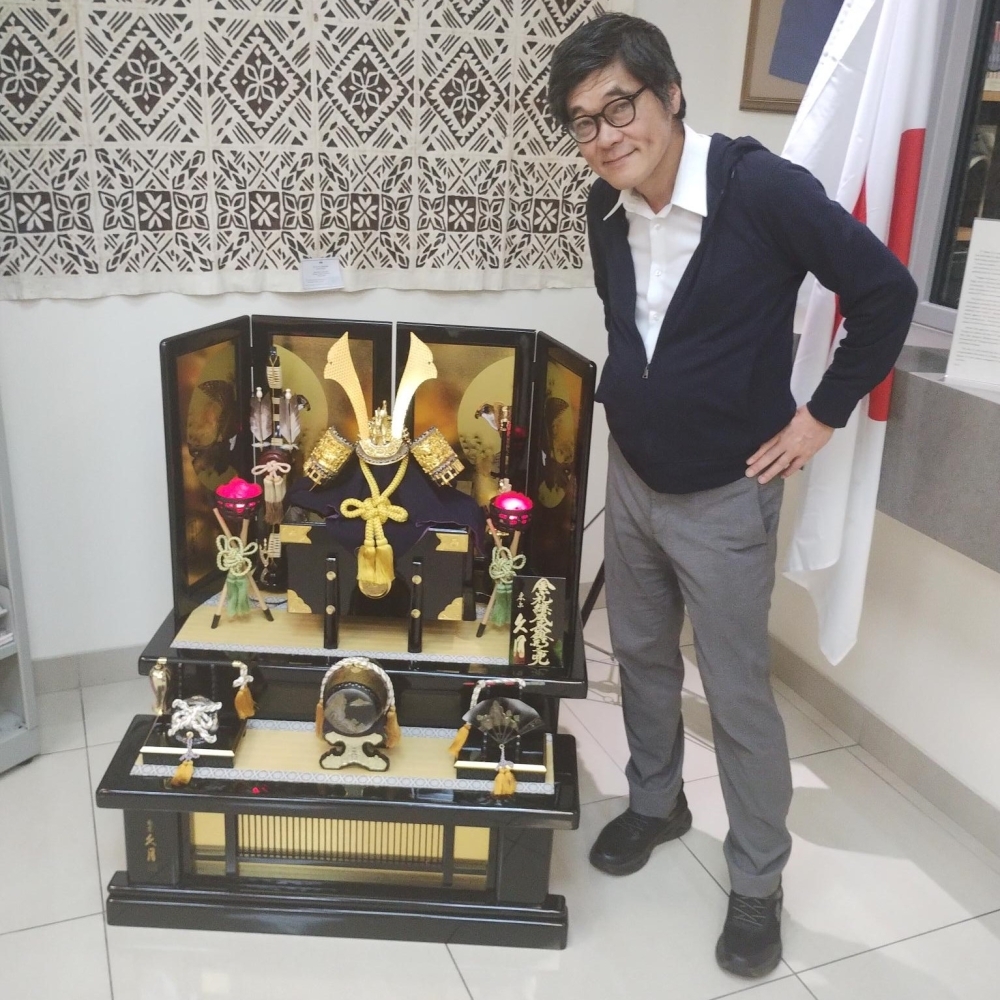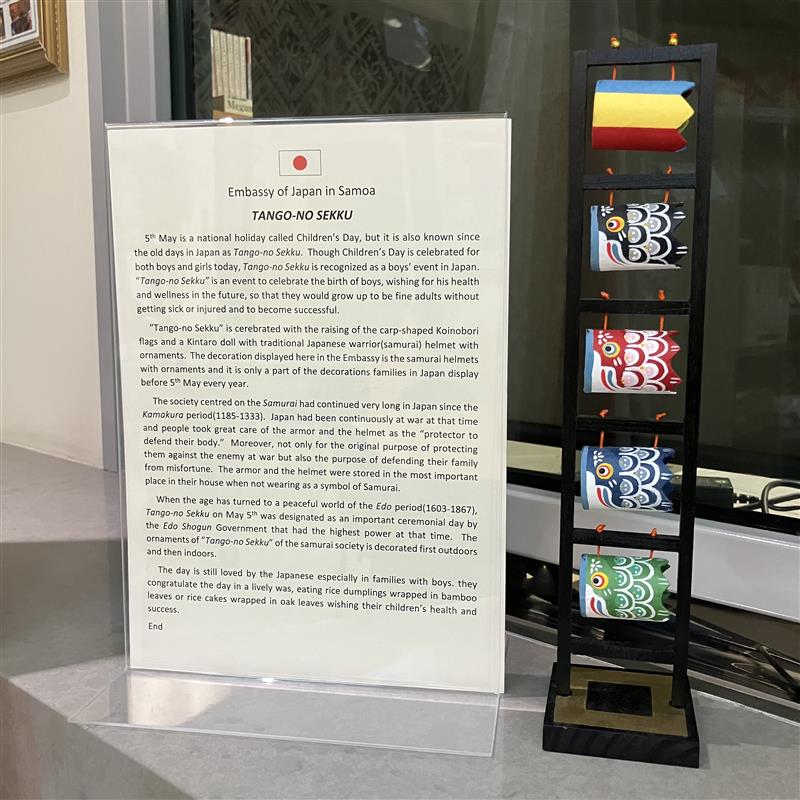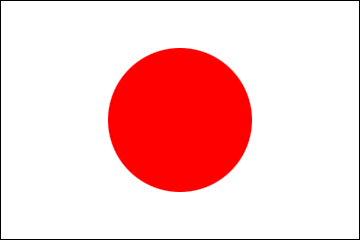From Ambassador (Children's Day celebrated in Samoa)
2025/5/2


Children's Day celebrated in Samoa
March 3rd was a day of Hinamatsuri, an event to pray for the health and happiness of girls. May 5th, on the other hand, is Children's Day.
In Japan, this day is a national holiday by law. According to the law, the purpose is to "respect the individuality of children, to ensure their happiness, and to express gratitude to mothers." Our embassy is also closed on this day. This day is also a celebration of the “Tango no Sekku”or Boys' Festival, which was introduced from China long time ago. That is an event held to pray for the healthy growth of boys.
In Japan, banners that resemble carp called "koinobori" are hung, and each household decorates with "kabuto" (helmets) and/or dolls of legendary heroes with strong and brave figures. Carp is a symbol of strength, and display of helmets etc. is done with the hope that children will be protected from illness and accidents. In today’s Japan, there are many young generations who don't know what "Tango no Sekku" means, but the customs of flying carp streamers and displaying helmets etc. on Children's Day remain in various places. The Embassy also has a fine "Kabuto" helmet, which we display in the reception area during this season. Please come and see it, if you have a chance.
By the way, the so-called "Mother's Day" is traditionally celebrated on the second Sunday of May in the United States, Australia and New Zealand, and this year it is May 11th. I think it is probably the same in Samoa. (By the way, in Spain it is the first Sunday of May, and in Sweden it is the last Sunday of May. The origin seems to be different in each country.)
Giving (or displaying) carnations is a standard. Since May 5th is officially "a day to express appreciation to mothers," you might think it would be appropriate to celebrate it on this day too in Japan. But many in Japan have conveniently forgotten about this. It has become a common practice to follow the American custom nowadays.
March 3rd was a day of Hinamatsuri, an event to pray for the health and happiness of girls. May 5th, on the other hand, is Children's Day.
In Japan, this day is a national holiday by law. According to the law, the purpose is to "respect the individuality of children, to ensure their happiness, and to express gratitude to mothers." Our embassy is also closed on this day. This day is also a celebration of the “Tango no Sekku”or Boys' Festival, which was introduced from China long time ago. That is an event held to pray for the healthy growth of boys.
In Japan, banners that resemble carp called "koinobori" are hung, and each household decorates with "kabuto" (helmets) and/or dolls of legendary heroes with strong and brave figures. Carp is a symbol of strength, and display of helmets etc. is done with the hope that children will be protected from illness and accidents. In today’s Japan, there are many young generations who don't know what "Tango no Sekku" means, but the customs of flying carp streamers and displaying helmets etc. on Children's Day remain in various places. The Embassy also has a fine "Kabuto" helmet, which we display in the reception area during this season. Please come and see it, if you have a chance.
By the way, the so-called "Mother's Day" is traditionally celebrated on the second Sunday of May in the United States, Australia and New Zealand, and this year it is May 11th. I think it is probably the same in Samoa. (By the way, in Spain it is the first Sunday of May, and in Sweden it is the last Sunday of May. The origin seems to be different in each country.)
Giving (or displaying) carnations is a standard. Since May 5th is officially "a day to express appreciation to mothers," you might think it would be appropriate to celebrate it on this day too in Japan. But many in Japan have conveniently forgotten about this. It has become a common practice to follow the American custom nowadays.
